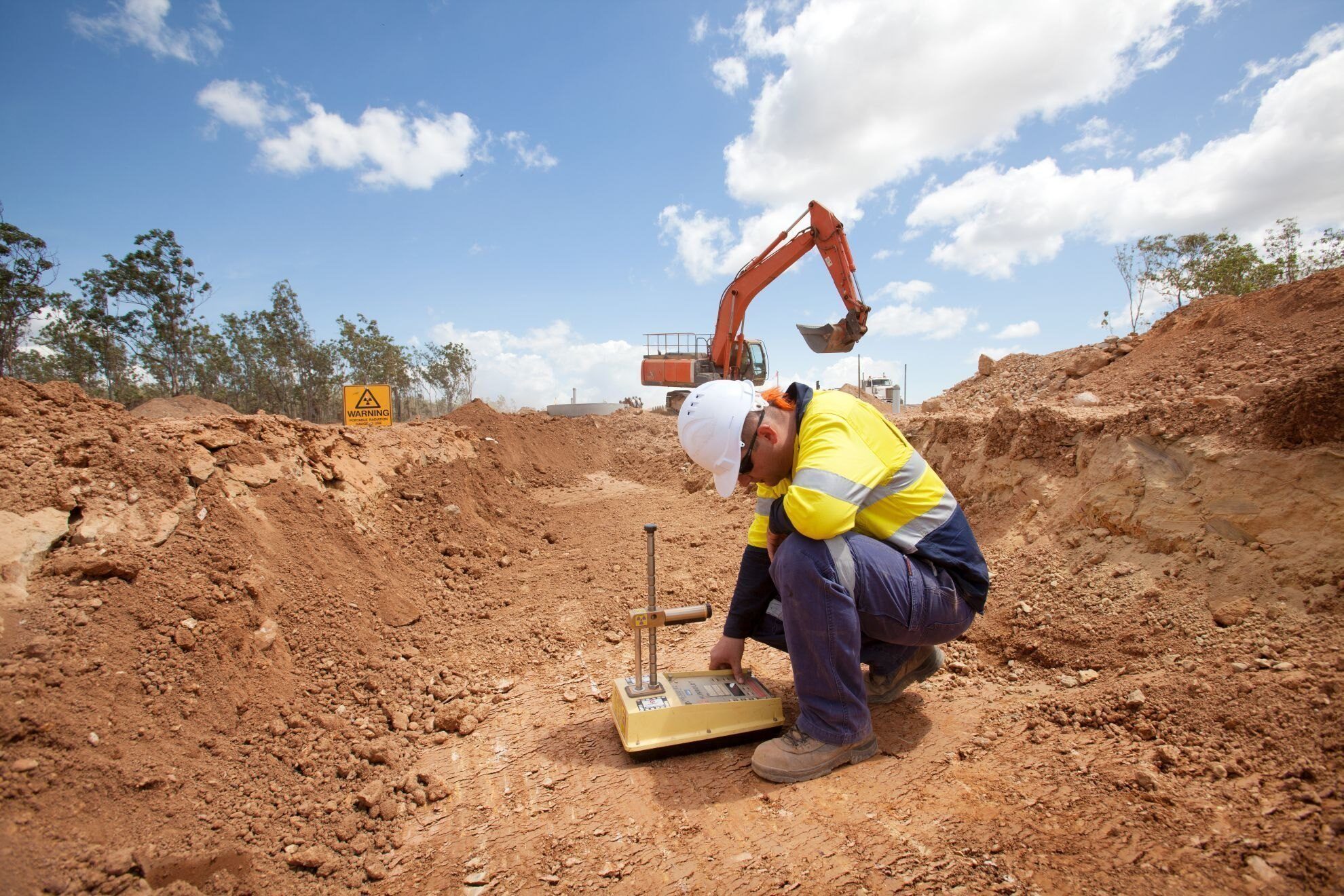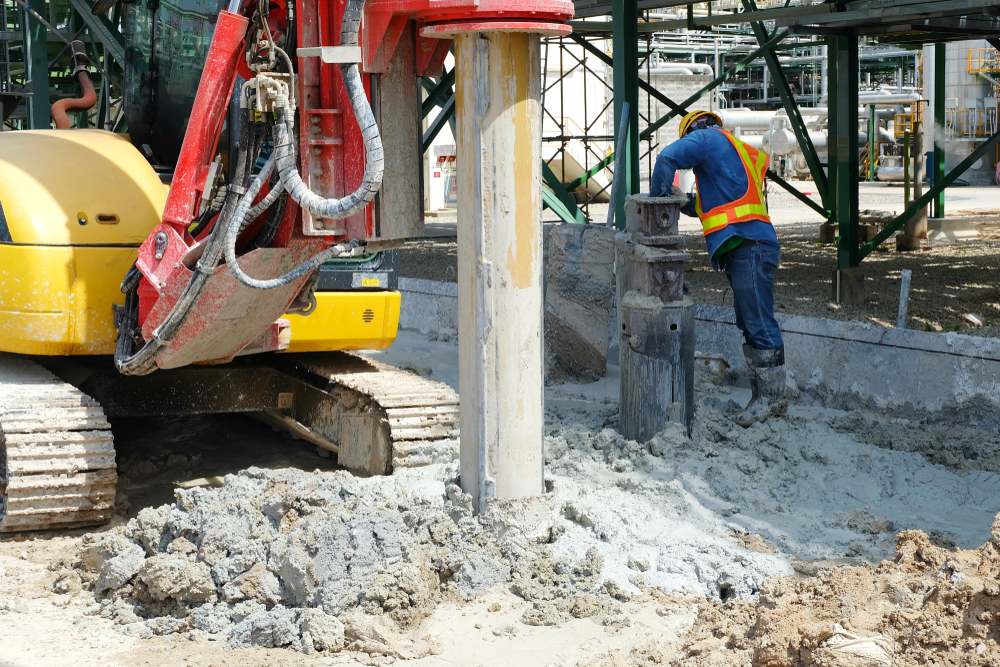The Geotechnical Engineering For Construction Projects Ideas
The Geotechnical Engineering For Construction Projects Ideas
Blog Article
How Geotechnical Engineering For Construction Projects can Save You Time, Stress, and Money.
Table of ContentsGeotechnical Engineering For Construction Projects Can Be Fun For EveryoneAll about Geotechnical Engineering For Construction ProjectsSome Ideas on Geotechnical Engineering For Construction Projects You Need To KnowThe smart Trick of Geotechnical Engineering For Construction Projects That Nobody is DiscussingThings about Geotechnical Engineering For Construction ProjectsFascination About Geotechnical Engineering For Construction ProjectsGeotechnical Engineering For Construction Projects Things To Know Before You Get This
Principles and Technique of Ground Renovation. Ground Enhancement Principles And Applications In Asia. Layout analysis in rock mechanics.Cengage Knowing, Stamford, 666 p. Atkinson, J., 2007. The technicians of dirts and structures. Taylor & Francis, N.Y., 442 p. Drifting Offshore Wind Wind Turbines: Reactions in a Sea state Pareto Optimum Designs and Financial Analysis, P. Sclavounos et al., October 2007. Nicholson, D, Tse, C and Dime, C. (1999 ). The Observational Technique in ground design concepts and applications.
Geotechnical Engineering For Construction Projects for Beginners
Laboratory and area testing plays an important duty in this procedure. By removing examples from the planet's subsurface and using a suite of examinations, geotechnical engineers can predict the behavior of dirt layers and assess their viability for various building and construction efforts. The essence of geotechnical design in civil engineering can not be overemphasized, attributable to a number of aspects: The initial step in any kind of geotechnical research study includes figuring out the soil type at the building website.
The structure acts as the bedrock of any building and construction project. Selecting the ideal foundation type is a choice that hinges on the extensive evaluation supplied by geotechnical engineering.

Geotechnical site examination is an important action in the preparation and implementation of any type of building and construction project. It entails the collection and evaluation of information associated with the physical homes of dirt and rock underneath a proposed building site. This information is essential for the design and building and construction of risk-free, steady, and lasting structures.
An Unbiased View of Geotechnical Engineering For Construction Projects
, likewise known as subsurface expedition, includes a series of activities aimed at figuring out the dirt, rock, and groundwater conditions at a building website. The primary objectives are to identify prospective geotechnical dangers, assess the engineering properties of subsurface products, and give suggestions for the layout and building of structures, maintaining wall surfaces, and other structures.
This might consist of geological maps, airborne photos, previous investigation reports, and historical data. The workdesk research study aids in recognizing prospective geotechnical issues and planning the subsequent fieldwork. Adhering to the desk research study, a website reconnaissance is conducted to aesthetically check the website and its surroundings. This entails observing the topography, water drainage patterns, existing structures, plant life, and any signs of instability or erosion.
The Best Guide To Geotechnical Engineering For Construction Projects
Superficial test pits are excavated to straight observe and example the soil and rock. This approach serves for examining the upper layers of the subsurface and determining near-surface threats. Non-invasive geophysical approaches, such as seismic refraction, ground-penetrating radar (GPR), and electric resistivity tomography (ERT), are utilized to map subsurface problems and identify abnormalities.
Soil and rock examples gathered throughout the field examination are subjected to laboratory Bonuses screening to identify their physical and mechanical buildings. These examinations offer crucial data for geotechnical evaluation and layout.
The main benefit of geotechnical website investigation is guaranteeing the safety and stability of structures. By comprehending the subsurface problems, designers can design foundations and various other architectural components that can endure the tons and ecological pressures they will undergo. This reduces the risk of settlement, decrease, and structural failing.
Geotechnical Engineering For Construction Projects Things To Know Before You Get This
Comprehending soil attributes can assist the selection of excavation strategies, dewatering approaches, and ground enhancement measures. This guarantees reliable and risk-free construction practices. Geotechnical website investigations are often called for by developing codes and regulations. Sticking to these demands ensures compliance with legal and safety criteria, avoiding possible legal liabilities and job delays.
This info is important for project managers, architects, and specialists in developing realistic routines, budget plans, and backup strategies. Geotechnical Engineering for Construction Projects. Skyscraper Structure in a Coastal AreaIn a coastal city, a skyscraper residential building was planned on a website with suspected loosened sand down payments and a high water table. A comprehensive geotechnical go to website examination, including borehole drilling, CPT, and geophysical studies, was performed
Geotechnical Engineering For Construction Projects Can Be Fun For Anyone
Based on these findings, the foundation layout was modified to include deep pile foundations prolonging right into stable strata, and ground renovation techniques, such as vibro-compaction, were applied to minimize liquefaction risks. This aggressive method made sure the safety and security of the building while avoiding pricey post-construction removal. Facilities Development on a Sloping TerrainA significant framework job, entailing the construction of a highway and bridges, was intended on an uneven surface with high slopes.

The Leaning Tower of Pisa (Italy), a legendary building marvel, is well known for its unintentional tilt from considerable geotechnical problems. The tower's foundation was improperly designed to deal with the soft, unsteady soil underneath it, resulting in uneven negotiation and its distinct lean. Our globe is populated with outstanding facilities projectsfrom looming high-rise buildings to sprawling bridgesall standing testimony to the advancement of the various building tools and methods offered.
Geotechnical engineering is a specialized area within civil design that concentrates on researching the behavior of planet products. This branch dives deep into the groundinvestigating exactly how the soil, rock, and groundwater at a construction website can influenceand be influenced bythe framework that we put up on and into them. Prior to a single block is laid or a concrete structure poured, geotechnical designers probe right into the earthgathering vital information concerning the site's soil structure, rock framework, and groundwater degrees.
Indicators on Geotechnical Engineering For Construction Projects You Should Know

is a device utilized to analyze the integrity and load-bearing capacity of piles throughout setup, leveraging the concept of wave propagation. It optimizes building efficiency by providing real-time assessments, therefore making certain secure and reliable pile structures. Among the functional applications of geotechnical engineering includes choosing and executing the best methods for foundation building.
Pile driving represents greater than the plain act of inserting structural elements into the ground. As a matter of fact, it is a thoroughly orchestrated procedure of transferring a framework's load past the less secure soil layers better to the surfacedown to the much more considerable strata that exist beneath. When it comes to heap driving, consider just how geotechnical designers adeptly use this strategy to uniformly distribute the structure's weight.
Report this page